Your cart is currently empty!
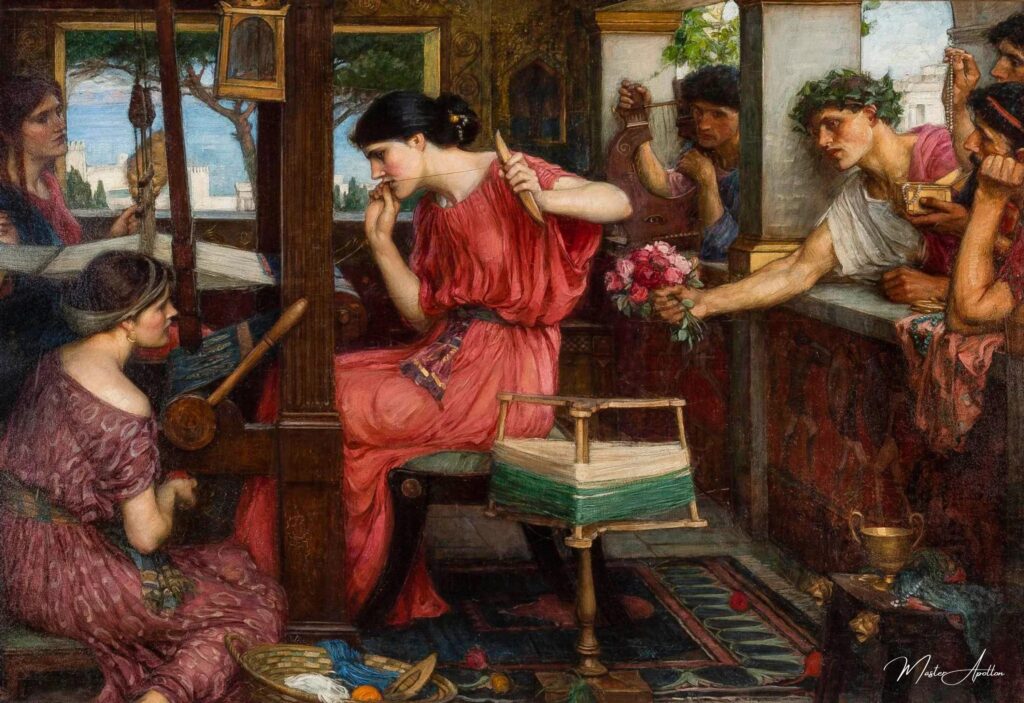
Penelope and the Suitors – John William Waterhouse
Immerse yourself in the enchanting world of classical art with our highest quality oil painting reproduction of “Penelope and the Suitors” by John William Waterhouse. This exquisite piece captures the poignant moment of Penelope’s unwavering loyalty and grace amidst the chaos of her suitors, embodying the timeless themes of love, patience, and resilience.
Every brushstroke in this reproduction…
“Penelope and the Suitors” by John William Waterhouse: A Portrait of Loyalty and Resilience
John William Waterhouse’s 1912 masterpiece Penelope and the Suitors is a poignant interpretation of Homer’s Odyssey, capturing the strength, cunning, and unwavering loyalty of Penelope, wife of the wandering hero Odysseus. With his characteristic attention to detail and emotional depth, Waterhouse portrays the inner turmoil and quiet determination of a woman besieged by unwelcome suitors.
The Narrative: Penelope’s Plight
In Homer’s epic, Penelope is left to fend off a crowd of suitors who vie for her hand during Odysseus’s prolonged absence. She employs clever tactics to delay remarriage, including weaving and secretly unraveling a shroud, a testament to her resourcefulness and hope for her husband’s return. Waterhouse’s painting beautifully encapsulates this legendary moment, offering a glimpse into Penelope’s world of persistence and longing.
Composition and Imagery
1. Penelope as the Central Figure
Penelope dominates the canvas, seated at her loom. Her posture conveys quiet resistance and introspection. She is depicted as focused and serene, contrasting sharply with the suitors, who linger in the background with predatory intent.
2. The Loom as a Symbol
The loom represents Penelope’s cunning and creativity. Her weaving is not just a craft but a lifeline, a symbol of her determination to control her own fate despite overwhelming odds.
3. The Suitors in the Shadows
The suitors, painted in muted tones, appear as an ominous presence, their expressions reflecting frustration and impatience. Their positioning at the edges of the scene highlights Penelope’s isolation and underscores her resilience in the face of their relentless pursuit.
4. The Setting
The dimly lit interior, adorned with rich textures and intricate details, evokes the ancient Greek setting of Ithaca while adding a layer of intimacy to the scene. The interplay of light and shadow mirrors the emotional tension between Penelope and the suitors.
Themes and Symbolism
1. Loyalty and Love
At its heart, Penelope and the Suitors is a tribute to loyalty. Penelope’s unwavering faith in Odysseus’s return is the emotional anchor of the painting, resonating with viewers as a timeless symbol of love and devotion.
2. Female Agency
Waterhouse’s depiction of Penelope emphasizes her intelligence and agency. Far from a passive victim, she is portrayed as a woman of strength and ingenuity, navigating her circumstances with grace and determination.
3. The Passage of Time
The act of weaving and unraveling the shroud serves as a metaphor for the passage of time. It reflects Penelope’s ability to manipulate her circumstances while enduring years of uncertainty.
4. Contrasting Forces
The painting contrasts Penelope’s calm resolve with the suitors’ aggression, highlighting the moral and emotional divide between them. This dichotomy underscores Penelope’s role as a symbol of virtue and patience.
Waterhouse’s Artistic Vision
1. Pre-Raphaelite Influence
Waterhouse’s connection to the Pre-Raphaelite Brotherhood is evident in the painting’s rich color palette, intricate detailing, and focus on literary themes. His ability to imbue classical stories with contemporary emotional depth makes his work both accessible and timeless.
2. Emotional Resonance
In Penelope and the Suitors, Waterhouse captures the psychological complexity of his subject. Penelope’s gaze, directed at her weaving, conveys a mixture of hope, sadness, and determination, inviting viewers to connect with her plight on a deeply personal level.
Legacy and Interpretation
Penelope and the Suitors remains a celebrated work for its exploration of human resilience and the enduring power of love. The painting continues to inspire modern audiences, resonating with themes of patience, intelligence, and moral strength.
Conclusion
John William Waterhouse’s Penelope and the Suitors is more than a visual retelling of Homer’s epic; it is a tribute to the strength and resilience of the human spirit. Through his masterful composition and attention to emotional detail, Waterhouse transforms Penelope’s story into a universal symbol of loyalty, love, and unwavering hope.
The painting reminds us that even in the face of adversity, resilience and faith can triumph, making Penelope and the Suitors an enduring masterpiece that speaks to the timeless themes of courage and devotion.
John William Waterhouse
John William Waterhouse was a British painter known for his enchanting depictions of mythological and literary themes, characterized by rich colors, emotional depth, and a focus on female figures that often evoke a sense of longing and beauty.
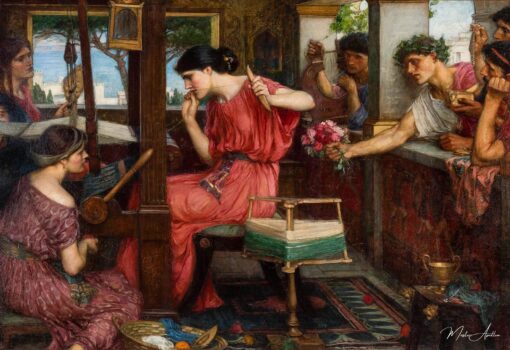
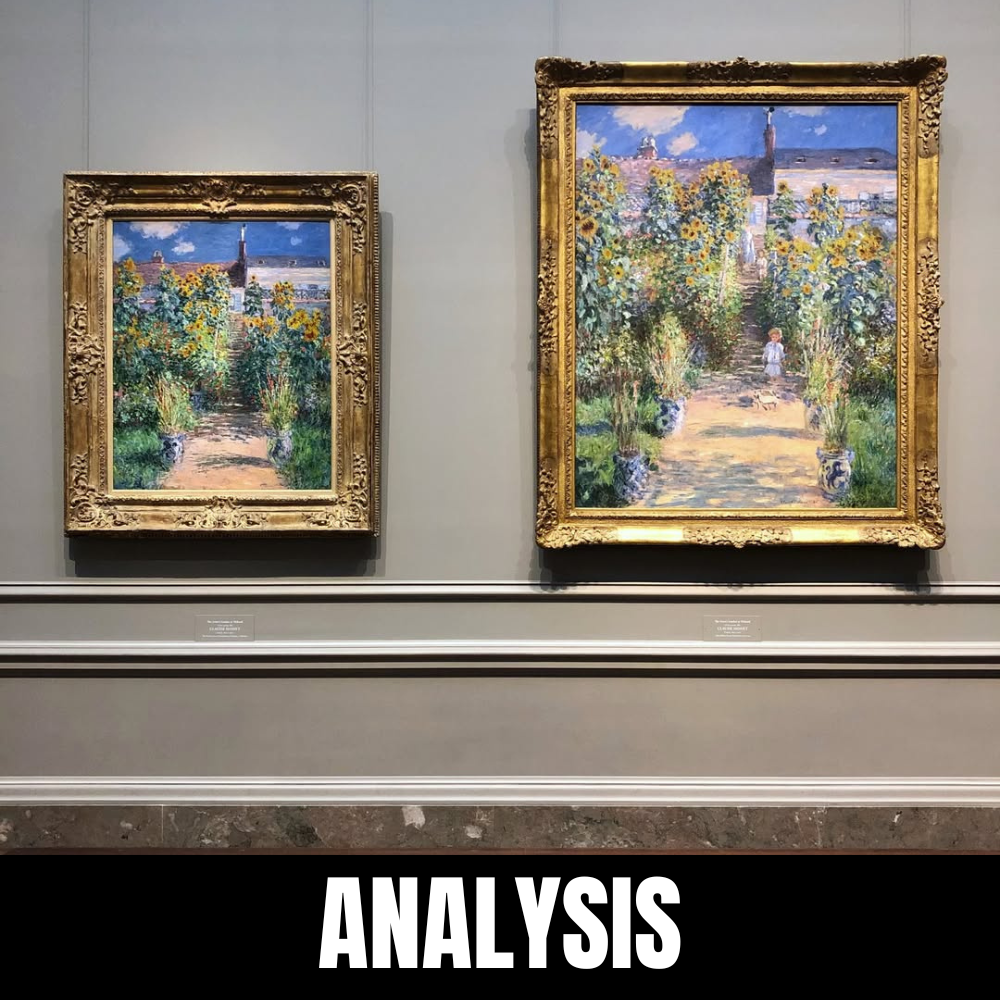
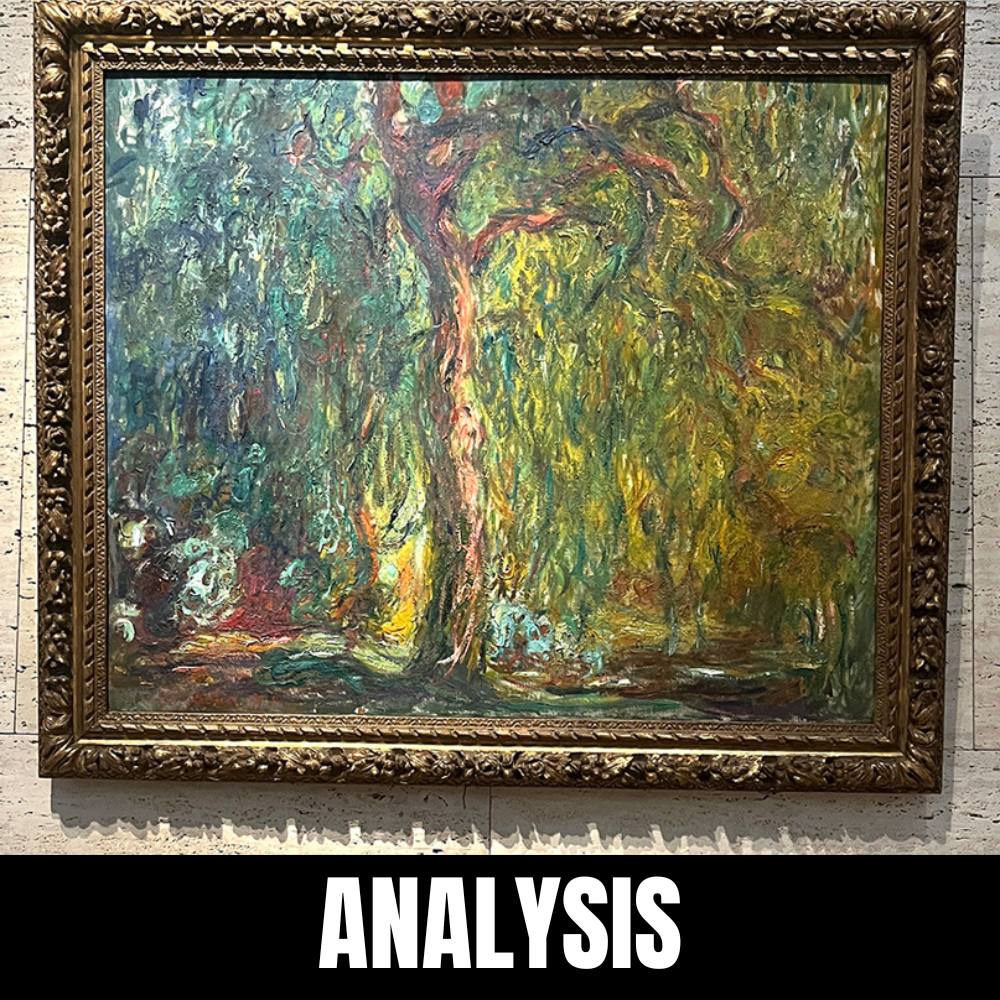
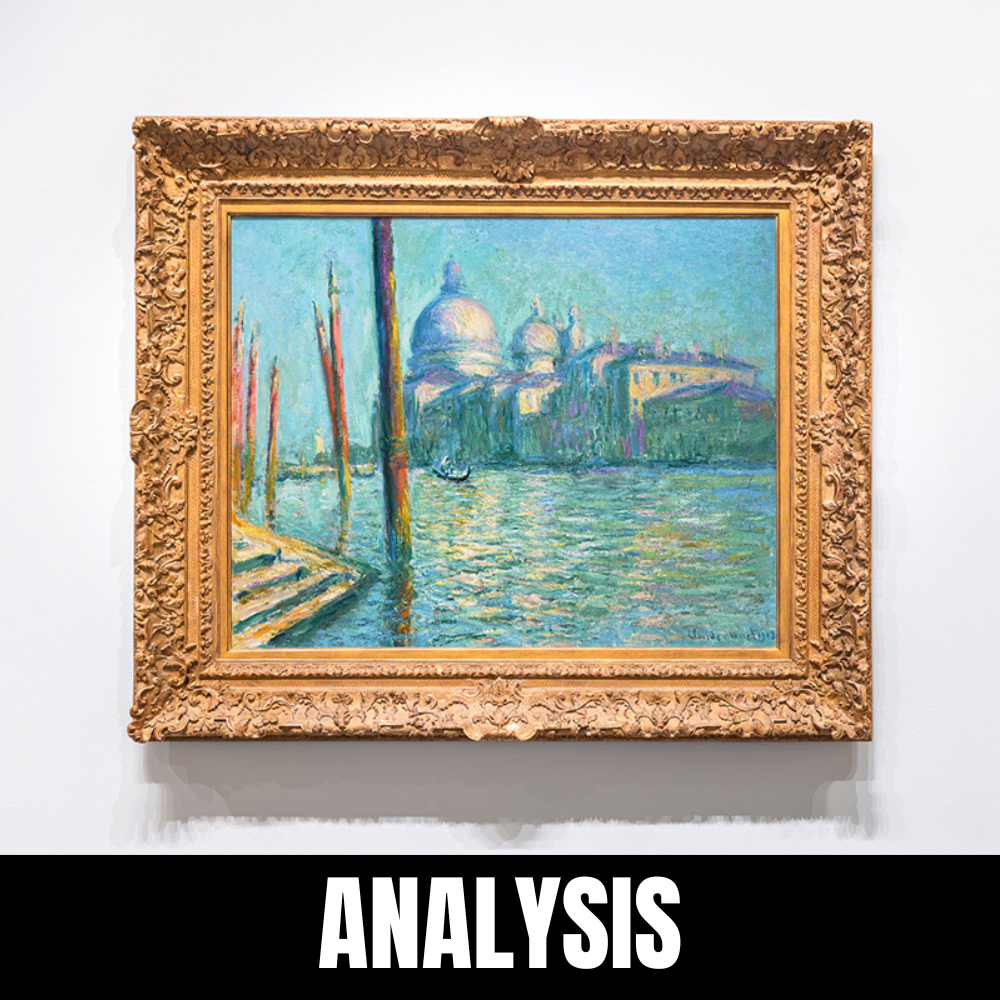
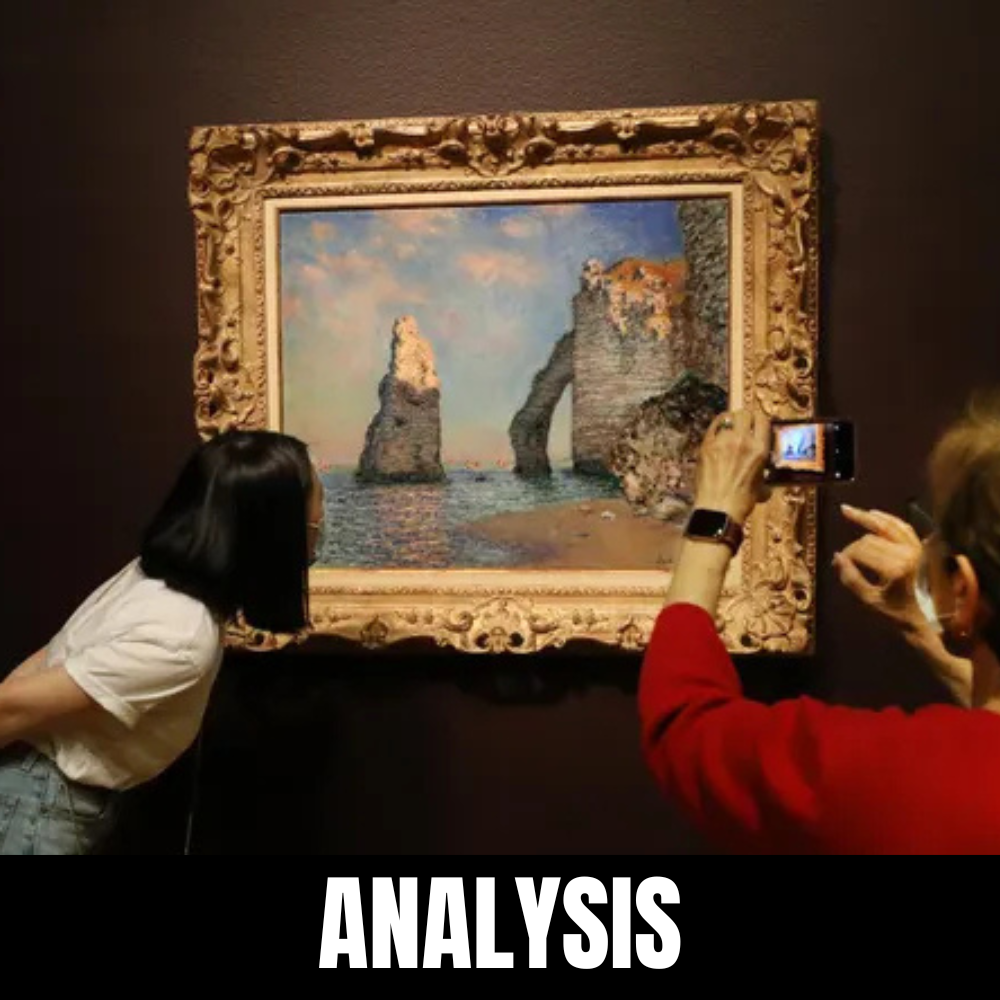
Leave a Reply